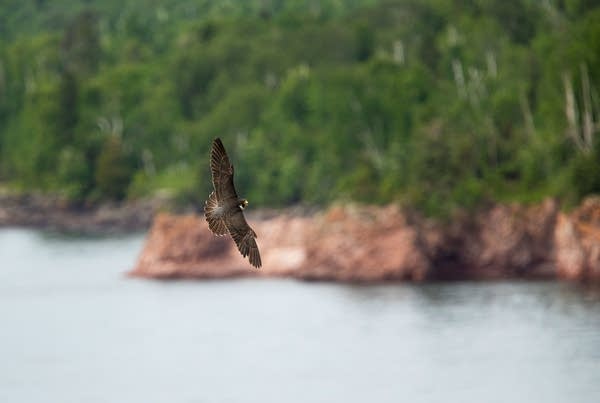Once-threatened peregrines flying high across Minnesota

A peregrine falcon flies over Lake Superior near its nesting site July 1 as climbers retrieve two chicks from its nest at Tettegouche State Park near Silver Bay, Minn.
Derek Montgomery for MPR News
Go Deeper.
Create an account or log in to save stories.
Like this?
Thanks for liking this story! We have added it to a list of your favorite stories.


